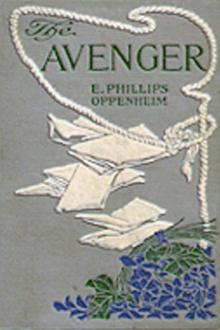Hitler's Terror Weapons, Brooks, Geoffrey [cat reading book .txt] 📗

Book online «Hitler's Terror Weapons, Brooks, Geoffrey [cat reading book .txt] 📗». Author Brooks, Geoffrey
One concludes, looking at the short time-scale for this project, that it would assuredly have been a most laudable engineering feat if Nowak’s helium engine could have been brought to the stage of operational use within two years of registering the patent, and fitted, moreover, inside a flying saucer, the initial designs for which had been begun only the previous year. An additional drawback would have been the embargo imposed on the sale of helium to Germany since before the war by the world’s only supplier, the United States. Helium had been wanted at that stage to build safer airships than the Hindenburg, but the United States suspected the Germans might want it for work on developing a hydrogen-based weapon. For this reason it does not seem very likely that Germany would have had enough helium to realize helium engine development and use.
A V-7 variant on the drawing board had a V-2 rocket engine slung below the fuselage for a top speed of 4000 kms/hr in level flight, but the burn would last only a minute or so and the advantage of bothering to build this variant is not obvious. The V-2 rocket engine was the only propulsion unit which might have required the disc to be constructed of special heat-resistant alloys, and the sketch of this variant probably came into existence precisely to explain that purpose. Having disposed of the less likely prime movers, we are left with a reported engine plant consisting of five kerosene-fuelled turbines, three for lift and two for forward thrust which, though less exotic than the other ideas, satisfy the requirement for vertical and horizontal flight at fast sub-sonic velocities. From their earlier work with helicopters it was not a particularly big step in the short period of time available to the idea of an advanced autogyro, its multi-bladed propellors forming a perfect circle and linked together by an outer ring. The blades rotated independent of the central fixed cabin and, unlike orthodox autogyros, there was no torsion factor. At take-off blade rotation was accelerated and, after acquiring speed and tremendous inertia, the blade angle changed from -3° to +3° and the machine would rise up suddenly. There should have been no problem piloting the craft with five engines: authoritative sources such as Andreas Epp stated that in earlier proving flights the disc would have been remote-controlled but with crew aboard. When the blades were closed to 0° for a continuous surface, a high sub-sonic speed (0.8 Mach) would have been possible and at least 25 kilometres altitude. Rudolf Schriever, who had been a Heinkel test pilot at Eger in the Sudentenland, worked on his design in a secluded hangar at Prague. BMW’s Design Bureau tested the engines. Initially He 178 turbines had been intended for propulsion but were not powerful enough for a perpendicular takeoff speed of 100 metres/sec. The replacements caused vibration problems, but these had been overcome within a week. There was a ring of reactors on board, one located bottom centre of the blade disc for vertical take-off. Schriever made the claim that the Flugkreisel, which was first airborne in October 1944, had flown supersonic, “this being possible by virtue of its aerodynamic shape”, he said. One suspects that what he really meant was that on flights from Norway to Spitzbergen, the 600-knot Flugkreisel achieved a ground speed in excess of Mach 1 when flying in the 175-knot west-east jet stream over Sweden at above 35,000 feet.163
Physically this autogyro was not capable of supersonic speed. There was no call for it to be built of heat-resistant alloys, but it obviously was. This is the big secret we are not supposed to know. Allied aircrew in very close proximity to the ‘fire-balls’ reported scorching of the fuselage. Feuerkugeln, the glowing spheres which chased aircraft, were very hot. If the same principle whereby the Flying Turtle changed into a ball of fire during its ascent applied to the German VTOL circular autogyro, that is to say that at some stage while climbing vertically it changed into a large glowing sphere, then it would need an outer and inner shell of heat-resistant alloys for when it was operating in that mode.
Festung Norway
Bases existed in Norway for the completion work on the Supreme V-Weapon. Heavy water for the German atomic research project was produced at Vemork and the former Rjukan power house is now





Comments (0)